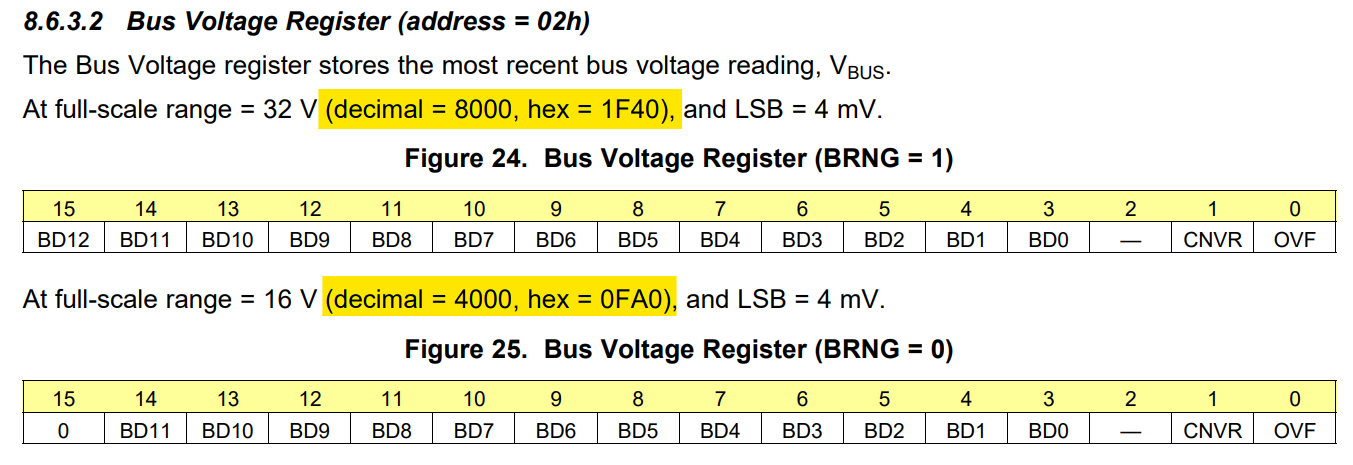Other Parts Discussed in Thread: INA239, INA238, INA228, INA229
Hi Team,
I have questions on the bus voltage calculation in INA220.
1. Bus voltage can be sampled in 9-, 10-, 11-, or 12-bit by BADC bit in the configuration register.

But it looks bus voltage is basically 13bit (02h[15:3]) when 32-V FSR, and 12 bit (02h[14:3]) when 16-V FSR.
Q1. With 32-V FSR, how the 13 bit of register 02h works with 12-bit resolution ADC?
Q2. With 16-V FSR, would the bus voltage value be right-aligned or left-aligned, if ADC resolution setting is 9 bit?

2. Could you help me to understand the basic concept of FSRs? There are two FSRs, 32V and 16V. What I understand so far is :
If I set 32V FSR, 26V of VBUS would be corresponding to 32V. So 26V can be divided into 8000 steps.
VBUS = 26V ---- 02h [15:3] = 1F40 h = 1 1111 0100 0000 b (32/4mV * 26/26 = 8000 --> 1F40 h)
VBUS = 13V ---- 02h [15:3] = 0FA0 h = 0 1111 1010 0000 b (32/4mV * 13/26= 4000 --> 0FA0 h)
If I set 16V FSR, 26V of VBUS would be corresponding to 16V. So 26V can be divided into 4000 steps.
VBUS = 26V ---- 02h [14:3] = FA0 h = 1111 1010 0000 b (16/4mV * 26/26 = 4000 --> FA0 h)
VBUS = 13V ---- 02h [14:3] = 7D0 h = 0111 1101 0000 b (16/4mV * 13/26= 2000 --> 7D0 h)
But I realize something wrong on my understanding. Because my calculation is different from 9.2.2 in the datasheet.
![]()
Q3. According to 9.2.2 in the datasheet, 11.98V of VBUS would be stored as 02h [14:3] = BB3h with 16-V FSR. What 02h[15:3] would be if I set 32-V FSR and apply 11.98V on VBUS? It would help for me to understand the basic concept of Bus voltage FSR.
Thanks.



